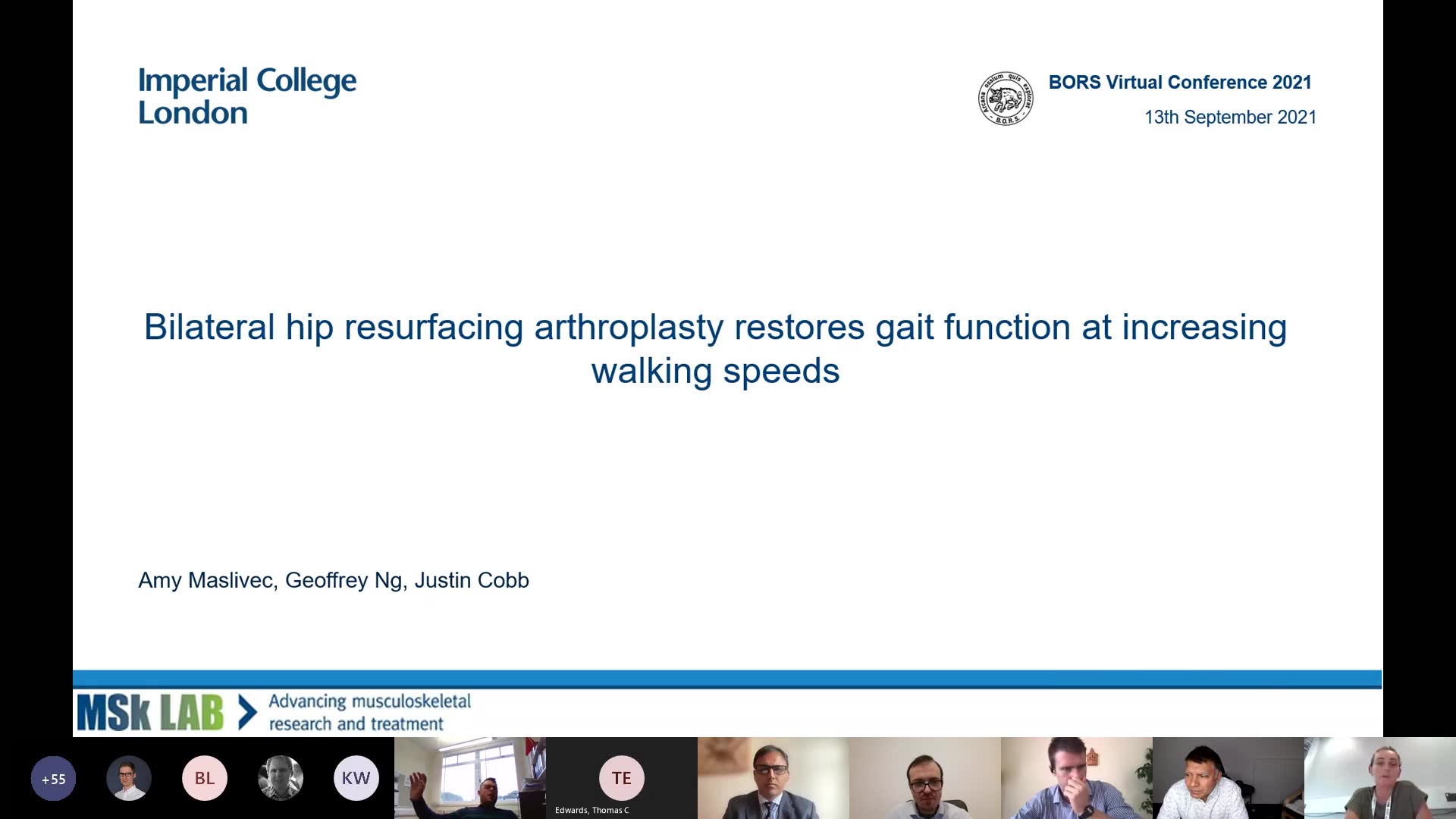Please login to view this media

- Talk
- 13/09/2021
- UK
Bilateral Hip Resurfacing Arthroplasty Restores Gait Function at Increasing Walking Speeds
Description
In this presentation, Amy Maslivec discusses a comparative study on gait function between patients who underwent bilateral hip resurfacing and those who had bilateral total hip replacements, focusing on their performance at various walking speeds. She explains the fundamental differences between hip resurfacing, which preserves more of the femoral head, and total hip replacements, which typically alter more of the bone structure. The study involved a sample of 15 patients from each surgical group and a control group of 20 healthy individuals, all matched for age, height, weight, and time since surgery.
Amy presents data gathered from patients walking on an instrumented treadmill, where their gait profiles, ground reaction forces, and step lengths were meticulously analyzed across a range of speeds. Key findings indicate that patients with hip resurfacing demonstrated superior gait functionality, particularly at faster walking speeds, in comparison to those with total hip replacements. The total hip replacement group struggled to achieve the same walking speed and step lengths, suggesting potential issues with stability and range of motion as speeds increased. The presentation concludes with a discussion on the implications of these findings and the necessity for further research to understand the underlying reasons for the observed differences, particularly regarding proprioception and muscle damage during surgery.